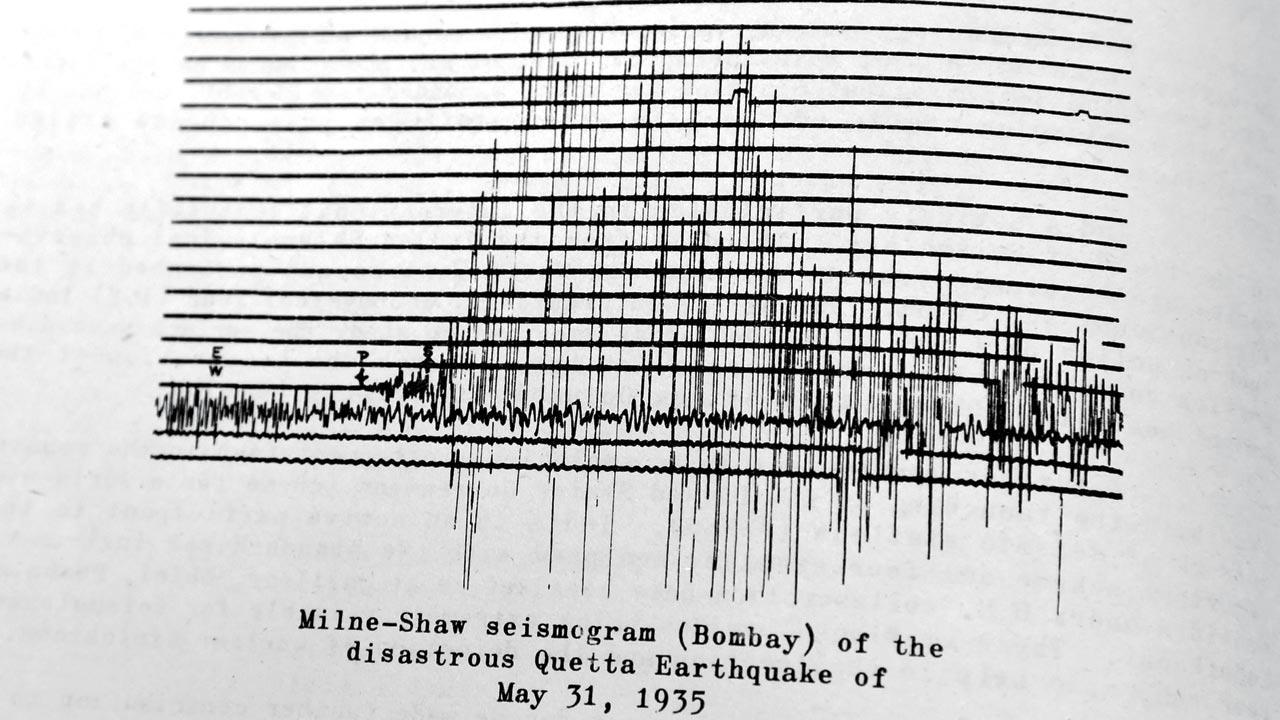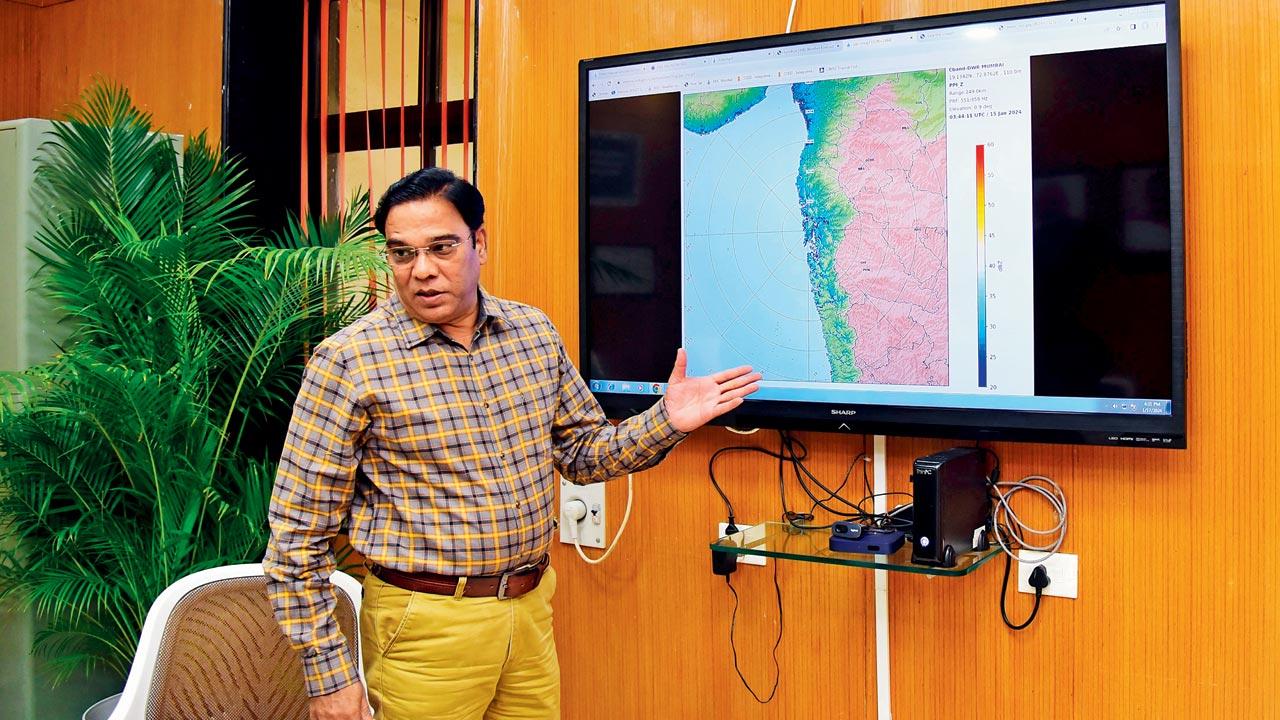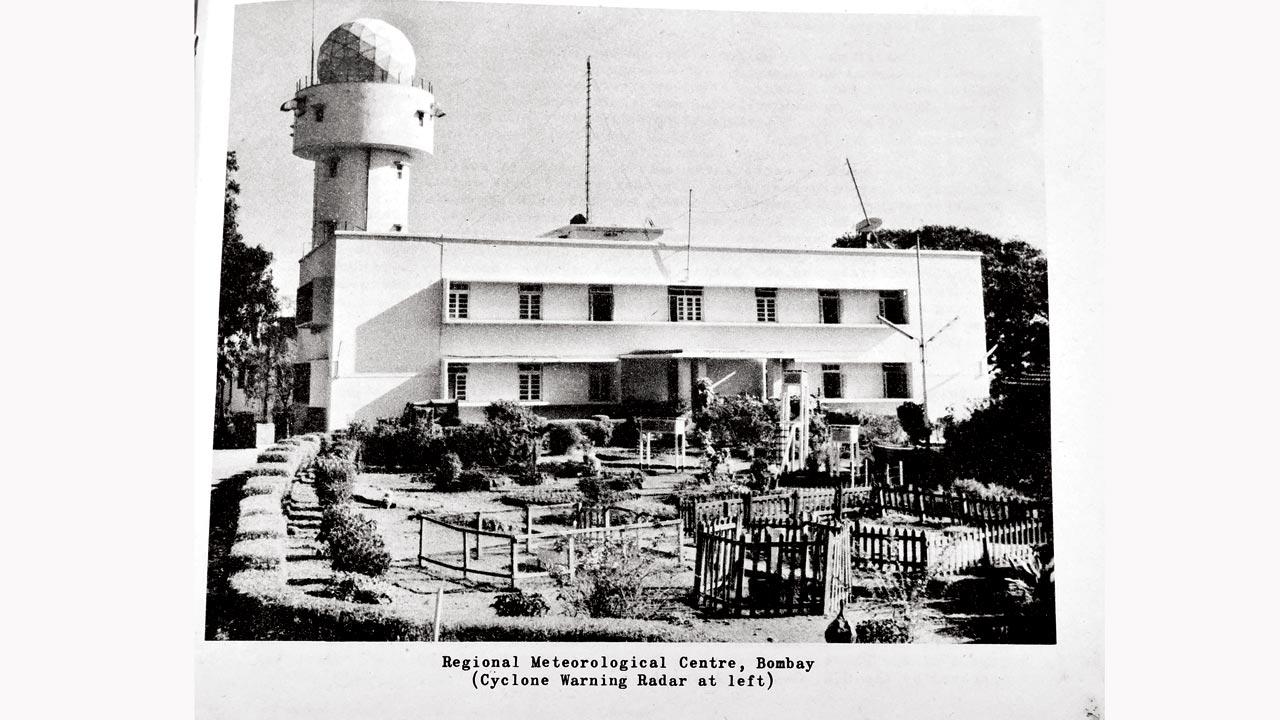The Indian Meteorological Department marks 150 years this year, but the conservatory at Mumbai has an older history, say its keepers

This is the seismograph reading of the Quetta earthquake in 1935. India was the only pacific country at the time that had the equipment to captuure this reading. According to officials the Indian government were informed about the reading as soon as it came in, so that aid could be sent in as soon as possible
Bombay Port was the East India Company’s (EIC) favourite one,” informs weather enthusiast Rajesh Kapadia. “The waters are calmer and the Arabian Sea is not as choppy as the Bay of Bengal. These were the primary reasons for the first observatory in India to be built in Colaba in 1823.” The observatory studied geomagnetism and meteorology to provide data for the Company to chart the safest sea to and from London to Bombay—a journey of 10,998 nautical miles.
“The EIC was concerned about goods, and did not want to lose trade ships to storms,” says Sunil G Kamble, Director, Indian Meteorological Department (IMD). “They were essentially trying to grow the trade lines between India and England. The first observatory was much smaller than today’s IMD Mumbai building.”
 Photographs of the devastation post the 1948 cyclone that lead to the death of seven people. Pics/Shadab Khan
Photographs of the devastation post the 1948 cyclone that lead to the death of seven people. Pics/Shadab Khan
On January 15, the IMD began its year-long celebrations of 150 years of watching the seas. Through the year, meteorological headquarters across the country will archive, innovate, and engage with stakeholders such as fishermen, and shipping and logistic operators. “Mumbai was actually the first city to have a meteorological department in the country way back in 1841,” says Kapadia, a Breach Candy resident, “so technically, we are 183 years old. The IMD was established only in 1875, and then set up in Madras and Calcutta—all important ports at the time as we were heavily dependent on sea routes for trade.”
Through the year, IMD Mumbai will collect lost archival information, images, stories to pour into a documentary that will be screened on January 15, 2025. “Getting archival information is an uphill battle, but we are sifting through our library, speaking to IMDs across the country, and weather reading enthusiasts to make this happen,” says Kamble.
 Sunil G Kamble shows the exact location of the Veravali Doppler radar placed in Goregaon to predict flash floods and cloud bursts
Sunil G Kamble shows the exact location of the Veravali Doppler radar placed in Goregaon to predict flash floods and cloud bursts
The state-wide IMD staff—600 scientists and researchers strong—has been broken into small groups across offices in Maharashtra to find historical information. One find has been the seismic reading of the Quetta earthquake of 1935, on the border of Afghanistan and Pakistan. The death toll was a staggering 70,000; the Bhuj earthquake of 2001—one of the biggest in independent India, claimed 13,800 lives. “When the Quetta earthquake readings came in, the information was passed immediately on to the Indian government so that they could anticipate the scale and gravity of devastation,” says senior IMD scientist Sushma Nair.
In November 1948, Bombay recorded the only cyclone in its history so far. “It has always been difficult to predict a cyclone in Mumbai because of the sea,” says Nair. “It can neither be tamed nor predicted. The low-pressure winds created over water can fizzle out as they approach land, or gain force and hit us like they did in 1948.” Photographs retrieved of the aftermath show a steamer capsized at Bombay harbour, a training aircraft turned turtle at Juhu, uprooted trees, and houses flattened. The death toll was seven.
 Sushma Nair and Rajesh Kapadia
Sushma Nair and Rajesh Kapadia
And how can one forget the flak IMD received for not predicting the 26/7 floods in 2005? Since then, many of the measuring instruments have been upgraded, but the biggest one was on January 15, 2023 when the first Doppler radar was placed at Veravali near Goregaon. Its range extends up to 450 km and includes Karwar, Parbhani, Gulbarga and Ahmedabad.
“The radar helps predict cloud formations, which is crucial information to predict heavy rainfall, cloud bursts and flash floods. For example, during the 2005 floods, Colaba recorded only 73 mm of rainfall while Santacruz recorded 944 mm,” says Kamble, who was posted at Air Traffic Control at the Santacruz domestic airport at the time. He had to wait there for two days until the first flight to be stranded—Indian Airlines Mumbai to Delhi with 144 passengers on board—took off.
 An archival photograph of the Regional Meteorological Centre
An archival photograph of the Regional Meteorological Centre
These days, IMD Mumbai is looking into using AI to forecast the weather, as well as for cloud seeding. “We are currently looking at solutions for the latter,” says Nair, “One suggestion is to paint the underbellies airplanes with Sulphur Bromide which helps in water precipitation, and therefore the formation of clouds,
leading to rain.”
As we step out into Navy Nagar, where the office is located, the scent of the Arabian sea lingers in the air. We’re told we are close to our island’s edge, a mere 900 m away; the 4-km stretch of Prong Reef lighthouse marks where land ends, and the unpredictable begins.
13,800
No. of lives the Quetta earthquake of 1935 claimed
 Subscribe today by clicking the link and stay updated with the latest news!" Click here!
Subscribe today by clicking the link and stay updated with the latest news!" Click here!










